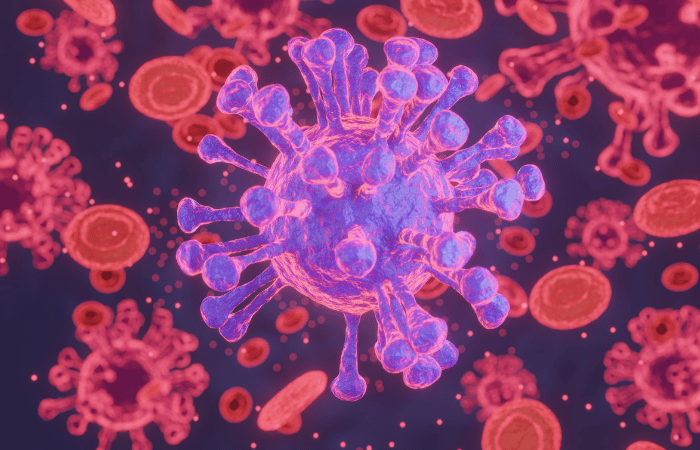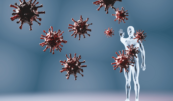Omidubicel is approved by USFDA to reduce time to neutrophil recovery and infection in patients with hematologic malignancies
May 2023: Omidubicel-onlv (Omisirge, Gamida Cell Ltd.) was approved by the Food and Drug Administration for use in adult and paediatric patients (12 years of age and older) with hematologic malignancies who are scheduled to receive an umbilical cord blood transplant after myeloablative conditioning in order to speed up neutrophil recovery and lower the risk of infection.
In Study P0501 (NCT02730299), an open-label, multicenter, randomised trial of omidubicel-onlv transplantation or unmanipulated cord blood (UCB) unit transplantation after myeloablative conditioning in patients with hematologic malignancies, the effectiveness and safety of the treatments were assessed. A total of 125 individuals were randomly assigned, with 62 receiving omidubicel-onlv and 63 receiving UCB. 52 patients had omidubicel-onlv transplantation, with a median dose of 9.0 X 106 cells/kg (range 2.1 – 47.6 X 106 cells/kg) of CD34+ cells. In the UCB arm, 56 patients had one or two cord units (66% received two cord units) implanted. The median CD34+ cell dose in the 42 patients who had post-thaw cell doses recorded was 0.2 X 106 cells/kg (range 0.0 – 0.8 X 106 cells/kg). There were other conditioning protocols utilised, such as those based on chemotherapy or Total Body Irradiation.
Time to neutrophil recovery after transplantation and the frequency of Blood and Marrow Transplant Clinical Trials Network (BMT CTN) Grade 2/3 bacterial or Grade 3 fungal infections through Day 100 after transplantation were the primary efficacy outcome measures. The median time to neutrophil recovery was 12 days (95% CI: 10-15 days) for those receiving omidubicel-onlv, and 22 days (95% CI: 19-25 days) for those receiving UCB. In the omidubicel-onlv arm, 87% of patients and 83% of those receiving UCB experienced neutrophil recovery. Through Day 100 after transplantation, the incidence of BMT CTN Grade 2/3 bacterial or Grade 3 fungal infections was 39% and 60%, respectively, in the two groups.
The prescribing material includes a Boxed Warning for deadly or life-threatening infusion reactions, graft versus host disease (GvHD), engraftment syndrome, and graft failure, similar to that of authorised UCB medicines. Omidubicel-onlv was administered to 117 individuals for any disease; of them, 47% experienced infusion reactions, 58% experienced acute GVHD, 35% experienced chronic GVHD, and 3% experienced graft failure.
The most frequent Grade 3-5 adverse responses in Study P0501 patients with hematologic malignancies were pain (33%), mucosal inflammation (31%), hypertension (25%), and gastrointestinal toxicity (19%).
The recommended omidubicel-onlv dose is two sequential infusions consisting of the following:
- a Cultured Fraction: a minimum of 8.0 × 108 total viable cells with a minimum of 8.7 percent CD34+ cells and a minimum of 9.2 × 107 total CD34+ cells, followed by
- a Non-cultured Fraction: a minimum of 4.0 × 108 total viable cells with a minimum of 2.4 × 107 CD3+ cells.
Full prescribing information for Omisirge will be available here.
Susan Hau is a distinguished researcher in the field of cancer cell therapy, with a particular focus on T cell-based approaches and cancer vaccines. Her work spans several innovative treatment modalities, including CAR T-cell therapy, TIL (Tumor-Infiltrating Lymphocyte) therapy, and NK (Natural Killer) cell therapy.
Hau's expertise lies in cancer cell biology, where she has made significant contributions to understanding the complex interactions between immune cells and tumors.
Her research aims to enhance the efficacy of immunotherapies by manipulating the tumor microenvironment and exploring novel ways to activate and direct immune responses against cancer cells.
Throughout her career, Hau has collaborated with leading professors and researchers in the field of cancer treatment, both in the United States and China.
These international experiences have broadened her perspective and contributed to her innovative approach to cancer therapy development.
Hau's work is particularly focused on addressing the challenges of treating advanced and metastatic cancers. She has been involved in clinical trials evaluating the safety and efficacy of various immunotherapy approaches, including the promising Gamma Delta T cell therapy.
- Comments Closed
- May 2nd, 2023






graft-versus-host disease prevention, Hematologic malignancy treatment, neutrophil recovery accelerator, nicord stem cell therapy, omidubicel FDA approval, Phase 3 trial results, reduced infection risk transplant, umbilical cord blood transplant
CancerFax is the most trusted online platform dedicated to connecting individuals facing advanced-stage cancer with groundbreaking cell therapies.
Send your medical reports and get a free analysis.
🌟 Join us in the fight against cancer! 🌟
Привет,
CancerFax — это самая надежная онлайн-платформа, призванная предоставить людям, столкнувшимся с раком на поздних стадиях, доступ к революционным клеточным методам лечения.
Отправьте свои медицинские заключения и получите бесплатный анализ.
🌟 Присоединяйтесь к нам в борьбе с раком! 🌟